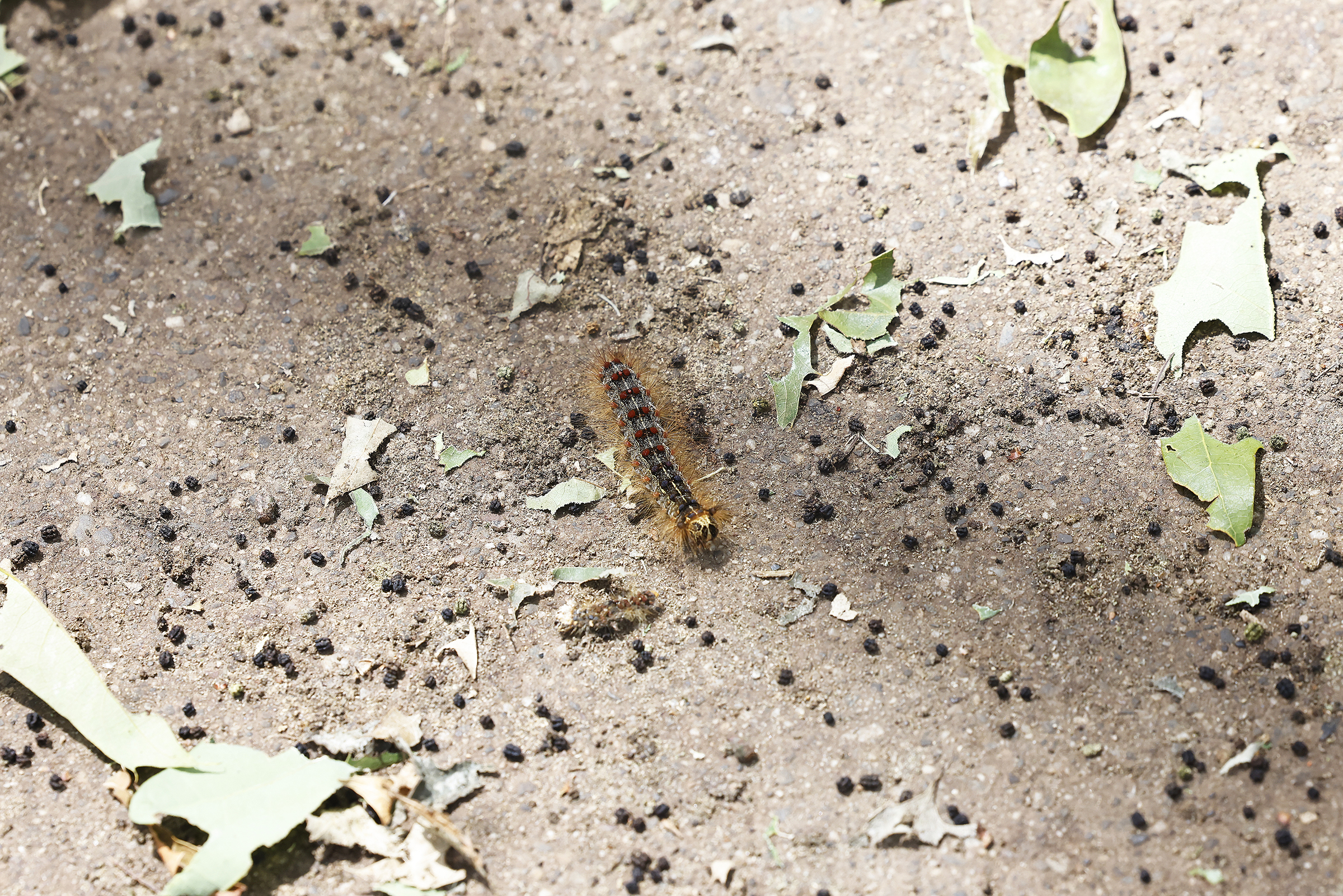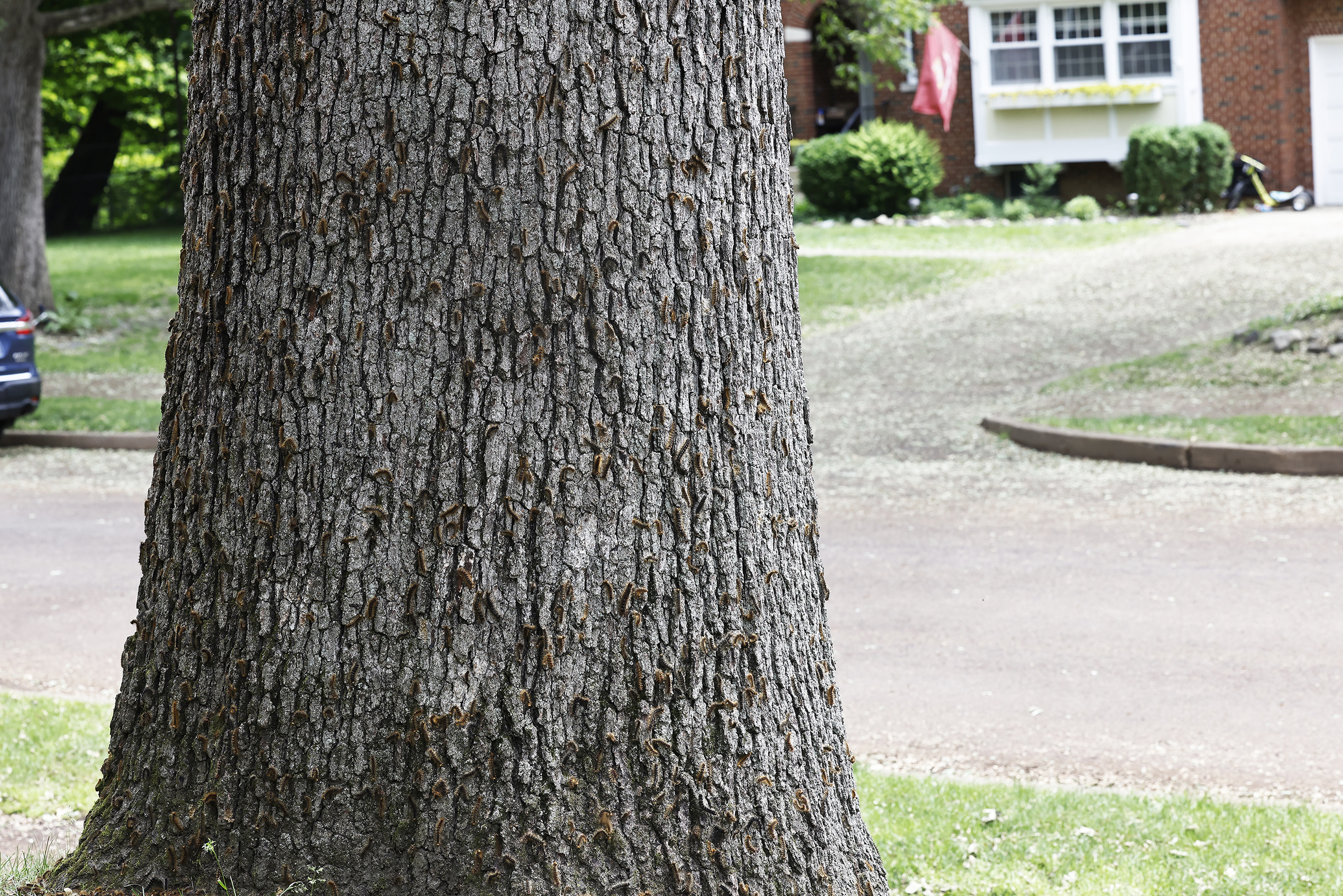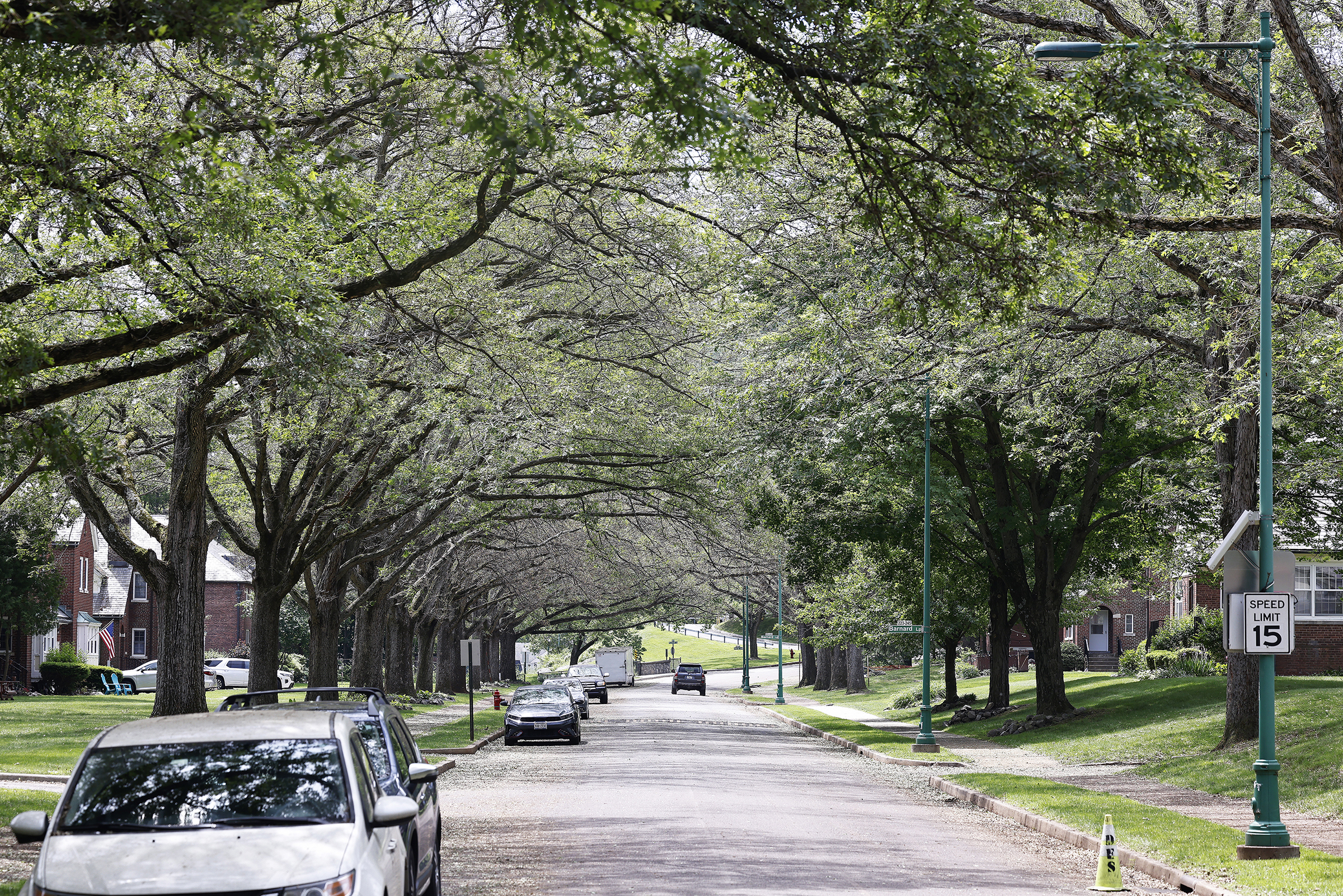𝐈𝐦𝐩𝐨𝐫𝐭𝐚𝐧𝐭 𝐀𝐧𝐧𝐨𝐮𝐧𝐜𝐞𝐦𝐞𝐧𝐭 𝐟𝐨𝐫 𝐭𝐡𝐞 𝐖𝐞𝐬𝐭 𝐏𝐨𝐢𝐧𝐭 𝐂𝐨𝐦𝐦𝐮𝐧𝐢𝐭𝐲
Many residents have expressed concern about the appearance of invasive caterpillars, commonly known as the Spongy Moth, on trees in the West Point neighborhoods. As such, we believe it imperative to provide you with pertinent information regarding these occurrences. Below are answers to questions provided by Mike Nuckols, West Point Natural Resources Environmental Management Division Chief.
Q: 𝑾𝒉𝒂𝒕 𝒊𝒔 𝑺𝒑𝒐𝒏𝒈𝒚 𝑴𝒐𝒕𝒉?
A: Formerly known as Gypsy Moth, Spongy Moth (Lymantria dispar) is an invasive moth from Europe that attacks forests throughout the Northeast. Moths lay hundreds of eggs which emerge as fuzzy caterpillars in late Spring.
These creatures disperse by climbing to the top of trees or ballooning from tree to tree on silk threads carried by the wind. Once in the canopy, the caterpillars will feed for five or six weeks at which point they pupate into moths. Introduced in 1869, the pest has naturalized in our forests, meaning they will always be around. Populations tend to spike in numbers roughly every 10-15 years and then crash the following year. Outbreaks are ended by natural causes such as predators and disease.
Q: 𝑾𝒉𝒂𝒕 𝒊𝒔 𝑾𝒆𝒔𝒕 𝑷𝒐𝒊𝒏𝒕 𝒅𝒐𝒊𝒏𝒈 𝒕𝒐 𝒉𝒆𝒍𝒑 𝒎𝒊𝒕𝒊𝒈𝒂𝒕𝒆 𝒕𝒉𝒆 𝒊𝒔𝒔𝒖𝒆:
A: We are currently following U.S. Forest Service and Cornell University recommendations for addressing this pest. Our Natural Resources staff is monitoring the outbreak, to include evaluating long-term impacts to trees in both the urban forest and natural areas. While a nuisance to residents, we anticipate no long-term damage to our trees.
Q: 𝑯𝒐𝒘 𝒄𝒂𝒏 𝑰𝒉𝒆𝒍𝒑?
A: If you find them now, you can scrape them off trees or buildings and drop them into a container of detergent to prevent the eggs from hatching. Removing their egg masses is not a cure for Spongy Moth infestations, but it is a small step you can take to help protect trees and foliage in your neighborhood.
Q: 𝑺𝒕𝒆𝒑𝒔 𝒕𝒐 𝒕𝒂𝒌𝒆 𝒊𝒇 𝒚𝒐𝒖 𝒐𝒓 𝒂 𝒍𝒐𝒗𝒆𝒅 𝒐𝒏𝒆 𝒄𝒐𝒎𝒆𝒔 𝒊𝒏 𝒄𝒐𝒏𝒕𝒂𝒄𝒕 𝒘𝒊𝒕𝒉 𝑺𝒑𝒐𝒏𝒈𝒚 𝑴𝒐𝒕𝒉?
A: It's advisable to wear gloves when handling spongy moth caterpillars. These caterpillars possess tiny hairs (setae) that contain histamines, which can trigger an itchy, red rash in some individuals.
Avoid touching caterpillars bare-handed; use disposable gloves, forceps, or other tools, which are recommended to knock caterpillars into a container of soapy water. Setae can remain on clothing, so fabric gloves or clothes that have contacted Spongy Moths should be washed separately. If skin irritation occurs, consult a physician for advice on topical medications to relieve irritation.
Q: 𝑾𝒊𝒍𝒍 𝑺𝒑𝒐𝒏𝒈𝒚 𝑴𝒐𝒕𝒉 𝒅𝒆𝒔𝒕𝒓𝒐𝒚 𝒐𝒖𝒓 𝒕𝒓𝒆𝒆𝒔?
A: Spongy Moth caterpillars prefer oaks, apples, birches, poplars and willows, but they will feed on many other deciduous and evergreen trees as well. A healthy tree can withstand some defoliation, so finding Spongy Moths on your property is serious but not necessarily the end for affected trees. We’d like to reassure the community that our trees will recover, and the population will crash as viruses and fungi begin spreading in the population.
𝐅𝐨𝐫 𝐟𝐮𝐫𝐭𝐡𝐞𝐫 𝐢𝐧𝐬𝐢𝐠𝐡𝐭𝐬 𝐢𝐧𝐭𝐨 𝐭𝐡𝐞 𝐒𝐩𝐨𝐧𝐠𝐲 𝐌𝐨𝐭𝐡 𝐚𝐧𝐝 𝐞𝐟𝐟𝐞𝐜𝐭𝐢𝐯𝐞 𝐦𝐚𝐧𝐚𝐠𝐞𝐦𝐞𝐧𝐭 𝐬𝐭𝐫𝐚𝐭𝐞𝐠𝐢𝐞𝐬, 𝐰𝐞 𝐞𝐧𝐜𝐨𝐮𝐫𝐚𝐠𝐞 𝐲𝐨𝐮 𝐭𝐨 𝐞𝐱𝐩𝐥𝐨𝐫𝐞 𝐭𝐡𝐞 𝐟𝐨𝐥𝐥𝐨𝐰𝐢𝐧𝐠 𝐫𝐞𝐬𝐨𝐮𝐫𝐜𝐞𝐬:
See more photos of what Spongy Moths look like.
Learn more about Spongy Moths and what you can do throughout the year.


